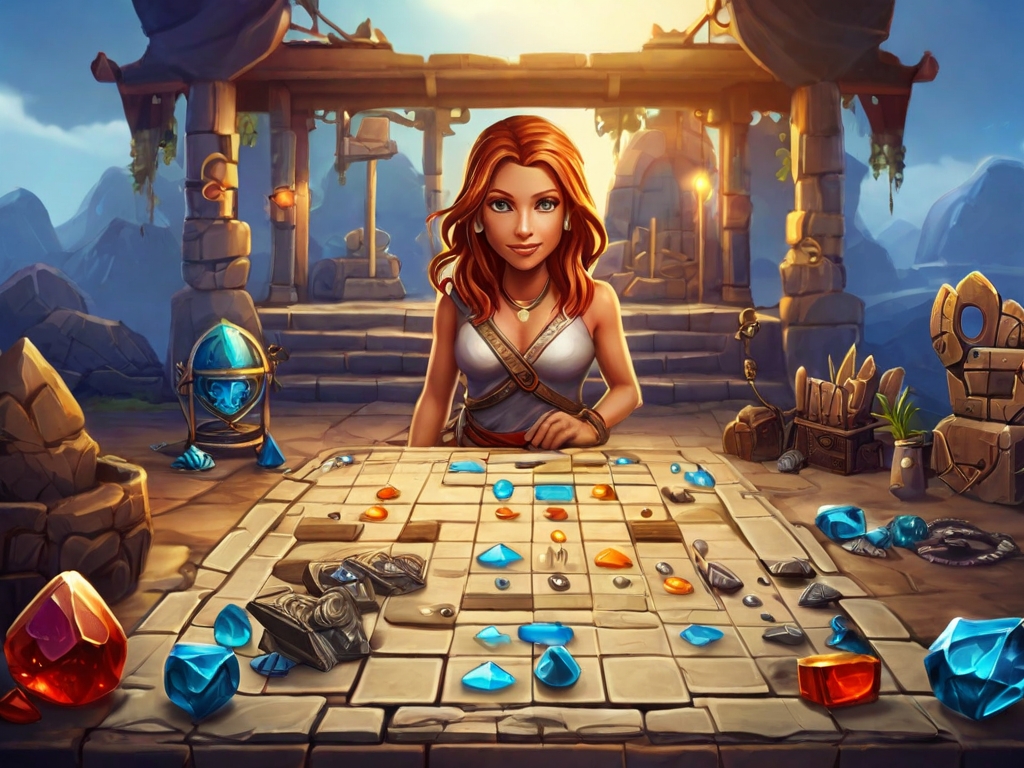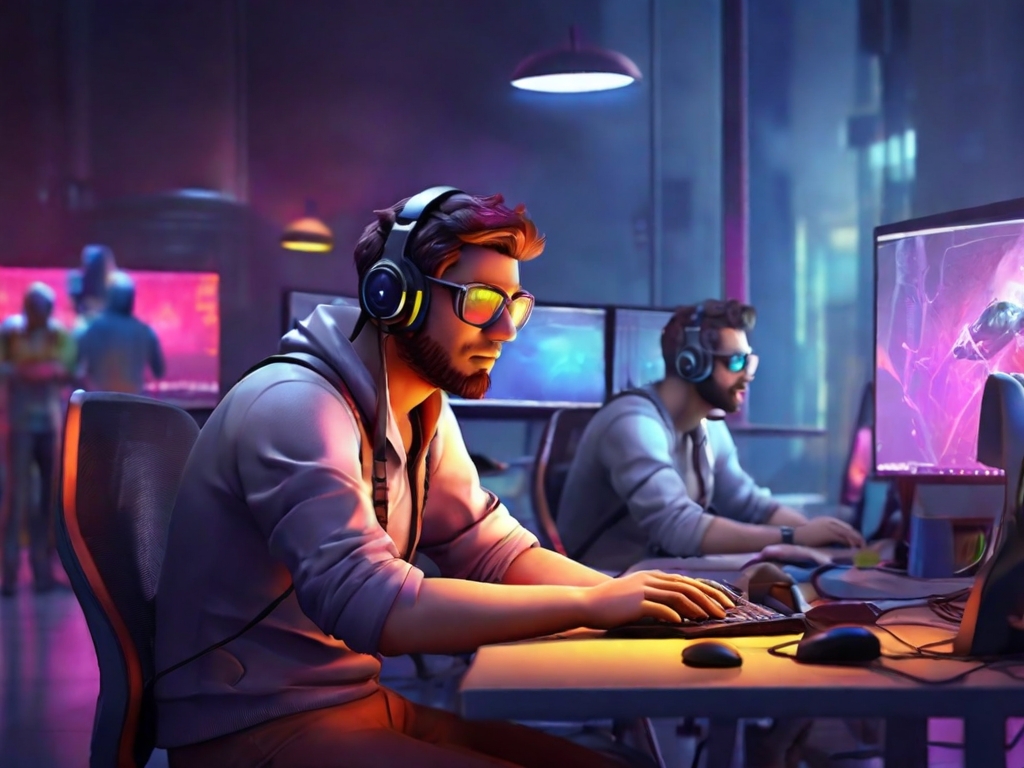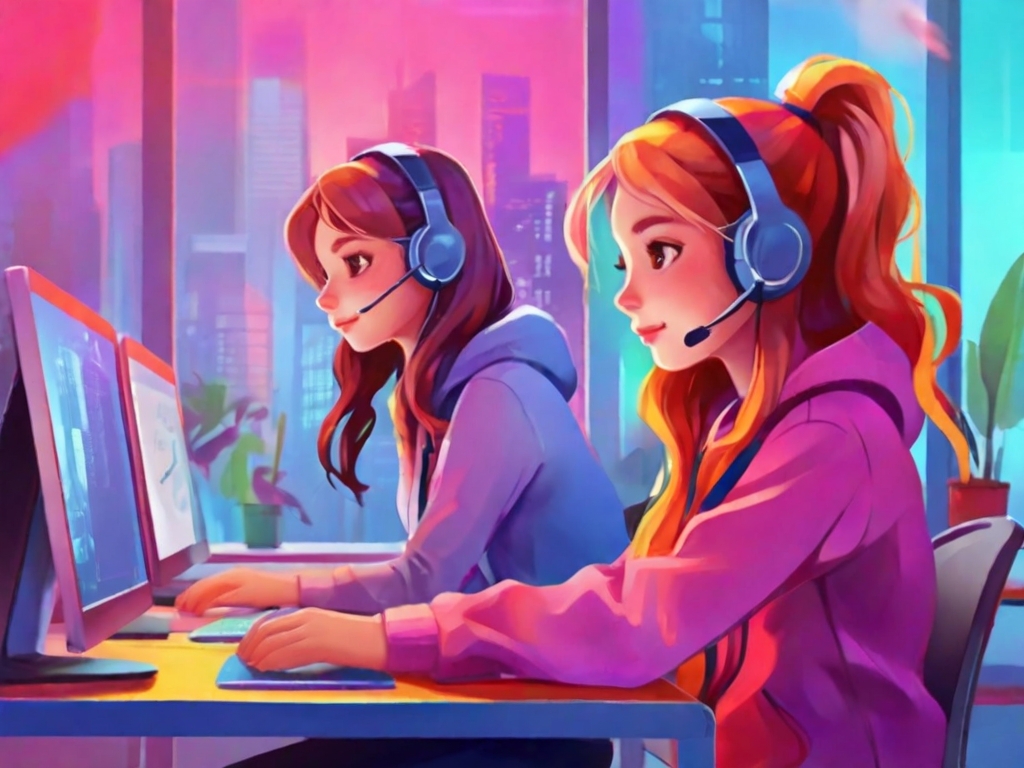
Greetings from the immersive world of game development, where technology and creativity combine to create life-changing experiences. At Melior Games, we take great pleasure in providing our wide range of games with top-notch amusement. Using the well-known match-3 genre as our canvas, we’ll walk you through the entire game and graphic production process in this tutorial.
Conceptualization
Any successful game development project starts with conceptualization. Ideas are conceived, developed, and molded into a unified vision that will direct the entire development course. At Melior Games, the conceptualization process starts with the production of a Game Design Document (GDD). It is an all-inclusive blueprint that describes every facet of the game, including its visual aesthetic and narrative components.
Game Overview
The GDD opens with a synopsis of the game that includes information on its genre, intended audience, and special features. This section will outline the fundamental idea of our match-3 game with quests, which is that players must solve match-3 puzzles to fulfill quests and advance the plot.
Core Mechanics
The GDD then goes on to describe the fundamental elements of gameplay. This would cover how matching tiles functions in our match-3 game, any unique skills or power-ups, and how missions are incorporated into the overall puzzle-solving experience.
Progress system
A key aspect of any game is a progression system that keeps players engaged and motivated to continue playing. In our match 3 game, GDD details how players progress through levels, unlock new abilities or content, and receive rewards for completing quests.
Quest design and storytelling
Since quests are a major component of our game’s gameplay, GDD will give these two areas a lot of attention. Character development, dialogue writing, and crafting an engrossing plot are all part of this process that keeps players interested. Consider the mission “Save the Mayor.”
- Objective: A evil sorcerer has abducted the mayor of a city, and players must save her.
- Tasks: Complete a string of match-3 puzzles to gather information, free the hostages, and go up against the sorcerer in his lair.
- Reward: After finishing the main plot successfully, players receive experience points, in-game currency, and advancement in the game.
Art Style and Visual Design
Choosing the game’s visual design and graphical style is a crucial next stage in the conceptualization process. Included within the GDD will be concept art, character designs, and environment sketch that establish the overall feel and look of the game. For instance, the creative style
Charming characters and elaborate, lush locations evocative of fantasy role-playing games may be found in the game’s bright, hand-drawn graphics.
The character designs are based on traditional fairy tales but have been modified to give each figure greater depth and individuality.

Design & Prototyping
Design and prototyping are key stages of the game development process where ideas begin to take shape and turn into tangible gameplay. At Melior Games, our team of talented artists and designers work closely together to bring the ideas outlined in the GDD to life.
Visual Style Development
Researching various visual styles and aesthetics that complement the game’s theme and story is the first step in our artists’ visual style development process. The process of developing a unified visual direction can involve producing concept art, mood boards, and reference photos. Inspired by fantasy role-playing games and fairy tales, we have created a visually appealing world for players to explore via the use of vivid colors, quirky character designs, and intricate environments in our match-3 quest game.
Character and Environment Design
After deciding on a visual aesthetic, our artists start giving the game’s characters and settings more depth. While settings inspire a sense of wonder and adventure, character designs reflect their personalities and roles within the game universe. Every character is brought to life via detailed sketches and digital illustrations, from the fearless warrior setting off on heroic escapades to the cunning criminals calculating their next move. In a similar vein, environments should whisk players away to magical worlds teeming with secret passageways and enigmatic landmarks.
Mechanics and Level Layout
In the interim, our designers concentrate on producing captivating gameplay elements and level layouts that test and captivate players. They experiment with different puzzle designs and mechanics using specialist software to make sure they are fun and easy to understand.
To produce a wide variety of puzzles that progressively get harder as players advance in our match-3 game, designers experiment with various grid sizes, tile kinds, and impediments. They also come up with concepts for tasks and missions that enhance the gameplay experience by providing complexity and advancement.
User Interface Design
Our UI/UX designers create a user interface that is intuitive, visually appealing, and easy to utilize in the game. They design wireframes and layouts that show where buttons, menus, and HUD elements should be placed to guarantee a consistent user experience across all platforms. The user interface creators keep player’s demands in mind, enabling them to concentrate on the action uninterrupted. This contains a primary menu where tasks can be chosen by players as well as an in-game HUD that displays progress and results.

Development
Development is the phase in which the concept described in the Game Design Document starts to take shape through the creation of assets, coding, and component integration. At Melior Games, we take great attention in choosing the tools and technologies that will enable our team to produce games more quickly and effectively.
Selecting Tools and Technologies:
Our first focus when choosing tools and technologies for development is to make sure they smoothly fit with the team’s experience, the needs of the project, and scalability. In our quest-based match-3 game, we utilize the following:
- Because of its vast documentation, cross-platform compatibility, and robust feature set, we prefer to use either Unity or Unreal Engine as our game engine. These engines give our developers the tools they need to create captivating gameplay experiences by offering strong coding, asset management, and visual scripting tools.
- The chosen engine determines choice of programming language. We can choose to script AI behavior, UI interactions, and gameplay mechanics in C#, C++, or both. Our developers are fluent in these languages. That’s why they can use their advantages and efficiently maximize maintainability and performance.
- Our artists use industry-standard programs including Adobe Photoshop, Illustrator, and Blender for art and animation applications. With so many features and customization choices available, these software solutions enable our artists to let their imaginations run wild. As a result, they bring the game world to life with eye-catching 2D and 3D assets, animations, and visual effects.
Coding Gameplay Mechanics
Our programmers begin coding the fundamental gameplay elements as described in the Game Design Document after selecting the tools and technologies. This entails putting quest objectives, character behaviors, UI interactions, and match-3 puzzle mechanisms into practice.
Our developers use the scripting features of the chosen game engine to write clear, modular code. This code should be simple to read, debug, and update. They leverage pre-existing frameworks and libraries to speed up development and guarantee compatibility across multiple platforms.
Asset Creation and Integration
Our artists keep working on character sprites, environment textures, particle effects, and user interface elements while the code takes shape. It also optimizes the performance and compatibility of these assets with the selected game engine.
After being developed, assets are added to the game using either third-party plugins or the engine’s built-in tools. Our developers collaborate closely with artists to ensure that assets are correctly imported, arranged, and performance and memory-optimized.
Testing and Debugging
Our QA team tests frequently throughout the development process to find bugs, malfunctions, and performance problems. They make sure that the game fulfills quality requirements and gives players a seamless and pleasurable experience.
The development team records, ranks, and then fixes any bugs found during testing. This can be modifying gameplay dynamics, repairing coding errors, or performance-enhancing asset optimization.

Integration & Testing
Integration and testing are important steps in the game development process. It’s the moment in a game where every single piece comes together to create a seamless, well-rounded experience. At Melior Games, we take the integration and testing process very seriously. This ensures that our match-3 game lives up to our high expectations and delivers a fantastic gaming experience.
Asset Integration
All of the art team’s creations are imported into the game engine and included into the project during the integration phase. Character sprites, background textures, animations, user interface components, sound effects, and music are all included in this.
Our developers collaborate closely with artists to ensure that assets are appropriately titled, arranged, and performance-optimized. To guarantee seamless operation, they also make sure that assets are accurately linked to the appropriate game objects and scripts.
Gameplay Integration
After integrating assets, the emphasis switches to integrating systems and gameplay mechanisms. To guarantee a fair and entertaining experience, this entails tying together scripts, putting game logic into practice, and fine-tuning gaming parameters.
To build quests, advancement systems, level layouts, and AI behaviors, our programmers work in tandem with designers. They put every game component through a rigorous testing process to make sure it functions as intended and ties in perfectly with the others.
Platform Integration
Platform-specific features and functionality may require additional procedures depending on the target platforms for release, such as PC, mobile, or console. Performance optimization, input control implementation, and platform-specific SDK and service integration are all included in this.
Our development team makes sure the game works on a variety of screens and devices, giving gamers on many platforms a consistent experience.
Testing
During the integration phase, testing is a continuous process that our QA team carries out with a range of tests to find and fix any problems or bugs. Functional, performance, compatibility, and usability testing are all included in this.
Our QA team extensively assesses every component of the game, from core functionality to edge cases and corner circumstances. To find areas that need work and refining, they also get input from playtesters.
Bug Fixing and Optimization
Testers uncover any problems or bugs, then log them, give priority and send to a development team to fix. Then, in a determined effort to improve and optimize the game for stable and fluid gameplay, our developers try to alleviate these problems.
Code efficiency, memory consumption, asset compression, and performance parameter adjustment are just a few of the tactics that can be used in optimization efforts. These optimizations ensure player pleasure and improve the game’s overall quality and performance.
Launch & Post-launch Support
Even if publishing a game is a significant first step, success in the competitive gaming business demands ongoing support and involvement. At Melior Games, we know how important it is to have a smooth launch and the continuous assistance needed to keep players interested and satisfied.
Launch Planning and Execution
We carefully plan our marketing campaign to create buzz and enthusiasm before the game launches. Press releases, social media campaigns, influencer partnerships, and the release of teaser trailers catered to our intended demographic are a few examples of how we may accomplish this.
We plan activities across all channels on release day to guarantee a seamless and prosperous launch. This includes keeping a careful eye on server uptime, responding quickly to any last-minute problems, and helping gamers who run into problems.
Gathering Feedback
We aggressively seek player feedback via a variety of platforms once the game becomes live. It could be in-game surveys, community forums, social media, and customer service channels. This input is very helpful in pinpointing areas that need work and resolving any potential problems.
To create a friendly and encouraging environment, our committed community managers keep an eye on player conversations and interact with the community. They serve as a liaison between the player base and the development team. It guarantees that user input is taken into consideration and immediately resolved.
Troubleshooting and Update
Even with extensive testing, problems occasionally occur after launch. Our development staff will promptly address any bugs or technical problems that players mention. Prioritizing important problems allows us to deliver hotfixes or patches when necessary to fix them.
We use player comments not only for issue fixes but also for future updates and content releases. Over time, this could entail adding new features, balance tweaks, missions, or cosmetic items to keep the game interesting and fun for users.
Community Building on Social Media
Social media can help to develop and made a community centered around a game. We share updates, behind-the-scenes information, and community events with our audience through active engagement on social media platforms. It includes Facebook, Instagram, Twitter, Discord, and others.
We encourage a feeling of enthusiasm and community among the community members. The most popular ways to do it are frequent posts, competitions, Q&A sessions, and developer diaries. To build a lively and encouraging community around the game, we urge players to submit their experiences, fan art, and comments.
Customer Support and Communication
Gaining and keeping the trust and loyalty of players requires providing exceptional customer care. We provide gamers with a variety of ways to get help, including social media, email, and in-game support tickets.
Our customer service representatives have experience in providing timely, polite assistance in response to player questions and concerns. We believe that open communication is essential, and we work hard to notify players of any developments or problems that may arise as well as the status of their concerns.
Conclusion
From idea to completion, making a match-3 game with objectives demonstrates the creativity and teamwork that characterize Melior Games’ game creation. We’ve created an experience that enthralls and thrills players all over the world by embracing originality, iteration, and player-focused design. We cordially welcome you to accompany us on this thrilling adventure as we work to push the limits of gaming and discover new horizons.




